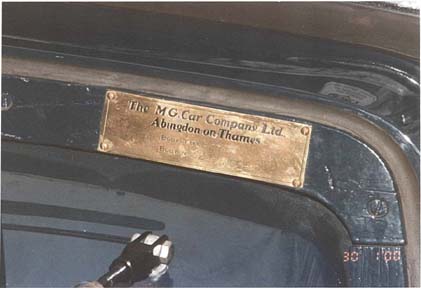
The Identification Page

This is the place under the bonnet (picture right) where you should find the body type (B271 for saloons, B275 for a drophead coupé and B272 for a tourer) and body number. However in many cases this id plate is lost. At least on early saloons the last four digits of the body number are stamped at the topface near the foremost part of the l.h.main body timber.(see below). Very hard to see as you have to take the floorboards out first.
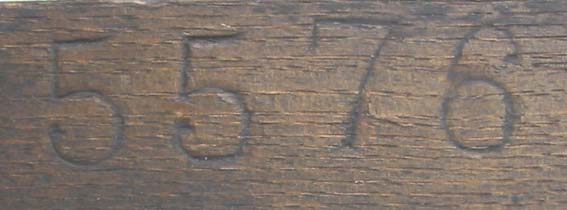
Body number stamped in body timber
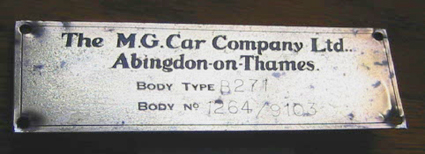
Body type and number. The number after the slash is expected to be the actual number of the body and repeated in the wooden frame (see above). Numbers before the slash probably indicate a batch number telling more about body specification.
Suggestions welcome !
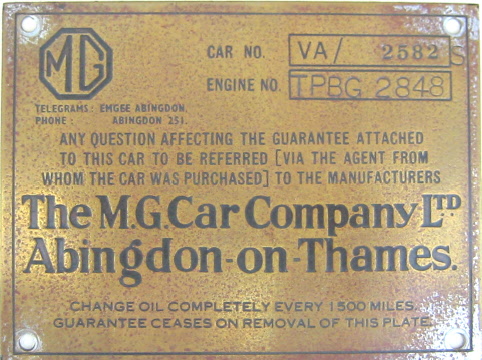
On the left is the VA's identification plate and useally located under the bonnet, fixed with screws to the left side of the scuttle. On saloons and tickford bodied cars it means removing the spare wheel to be able to read it. It tells you the cars chassis number as well as the engine number it had when it left the factory.
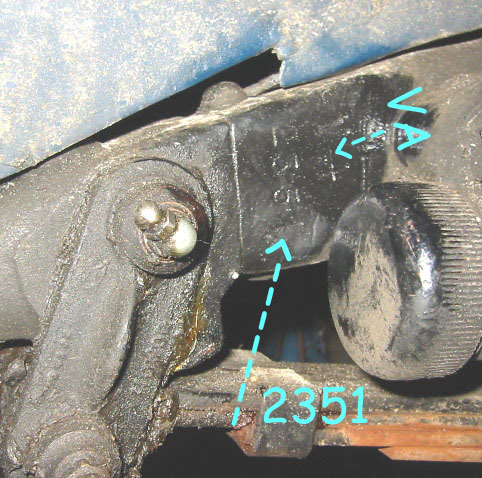
The cars chassis number should also be stamped on the outside of the left front dumbiron. This one reads:
VA 2351.
It is obviously a late chassis with piston type shock absorbers. The spring shackle plate is an original; the lubrication nipples are quite modern for a VA.
The engine number id plate is useally fitted to the cranckcase on the exhaust side side of the engine. It consist of a backplate with the actual serie number of the engine and a smaller plate in the middle with the engine type.
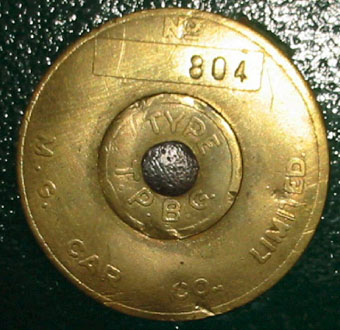
On early engines (often green) its a round plate on later cars the bigger plate is octagnonal in shape.
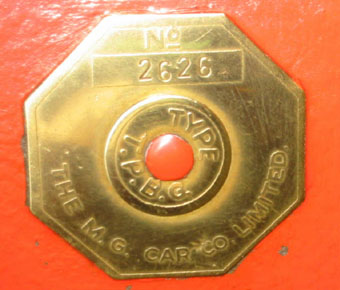
On later engines (useally red) the engine number plate looks like the one on the left..
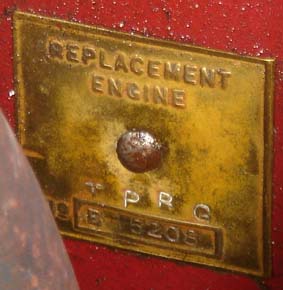 If
there is an official replacement engine the ID plate looks like the one on the
right. Often in combination with another brass plate telling the undersize of
the crank journals and the oversize of the cylinder bores.
If
there is an official replacement engine the ID plate looks like the one on the
right. Often in combination with another brass plate telling the undersize of
the crank journals and the oversize of the cylinder bores.
A genuine VA engine is always a TPBG type engine. On some experimental cars there was an engine with a bigger (73mm) bore and they were called TPDG engine's.
T = Morris 12/4 P = pushrod ohv B = bore 69,5mm/ 12HP G = MG
a TPBM engine is virtually the same but original fitted to a Morris
a TPBW engine is virtually the same but original fitted to a Wolseley
Quite often you will find a plate mentioning Morris Motors exchange unit.
Very late engines have the MG logo cast on the left hand side of the block.
Early wet clutch engines are useally painted green, later engines with a dry clutch are useally painted red.
Chassis numbers run from 0251 untill 2657
Engine numbers for the first three VA's were 6303/1, 6303/2, 6303/3 from there on it went on with TPBG 501 untill 2919.
Body numbers known run from (chassis 0410)117/631 untill (chassis 2582) 1264/9103 but as there are lower and higher chassis numbers issued there are supposedly higher and lower body numbers to be found. The last three or four digits in a bodynumber seem to relate to the actual number built.
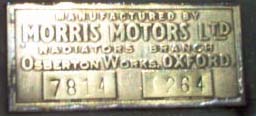
This ID plate is useally found soldered to the toptank of the radiator. Although there is no history of these numbers it would make an interesting study !
More to follow.